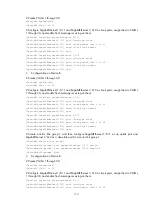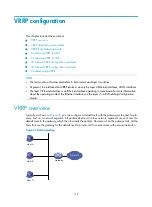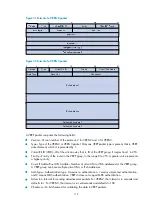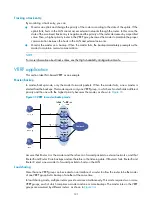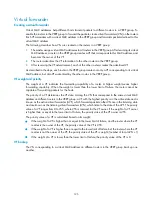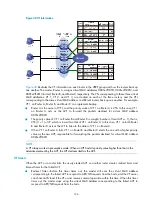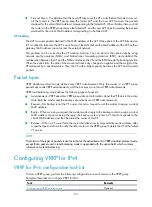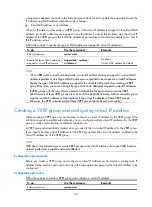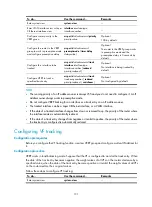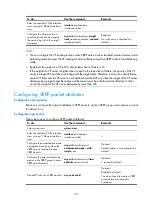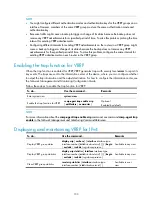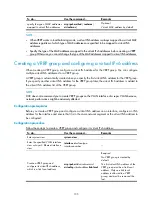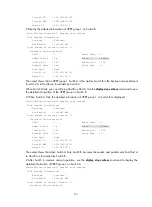
126
Figure 38
VF information
illustrates the VF information on each router in the VRRP group and how the routers back up
one another. The master, Router A, assigns virtual MAC addresses 000f-e2ff-0011, 000f-e2ff-0012, and
000f-e2ff-0013 to itself, Router B, and Router C respectively. The VFs corresponding to these three virtual
MAC addresses, VF 1, VF 2, and VF 3, are created on each of the three routers, and the VFs
corresponding to the same virtual MAC address on different routers back up one another. For example,
VF 1 on Router A, Router B, and Router C can implement backup.
•
Router A is the owner of VF 1, and the priority value of VF 1 on Router A is 255. In this case, VF 1
on Router A acts as the AVF to forward the packets destined for virtual MAC address
000f-e2ff-0011.
•
The priority value of VF 1 on Router B and Router C is weight/(number of local AVFs + 1), that is,
255/(1 + 1) =127, which is lower than that of VF 1 on Router A. In this case, VF 1 on both Router
B and Router C acts as the LVF to listen to the status of VF 1 on Router A.
•
When VF 1 on Router A fails, VF 1 on Router B and Router C elects the one with a higher priority
value as the new AVF, responsible for forwarding the packets destined for virtual MAC address
000f-e2ff-0011.
NOTE:
A VF always works in preemptive mode. When an LVF finds its priority value higher than that in the
advertisement sent by the AVF, the LVF declares itself as the AVF.
VF timers
When the AVF on a router fails, the newly elected AVF on another router creates redirect timer and
timeout timer for the failed AVF.
•
Redirect Timer—Before this timer times out, the master still uses the virtual MAC address
corresponding to the failed AVF to respond to ARP/ND requests from the hosts, and the VF owner
can share traffic load if the VF owner resumes normal operation within this time. When this timer
times out, the master stops using the virtual MAC address corresponding to the failed AVF to
respond to ARP/ND requests from the hosts.


